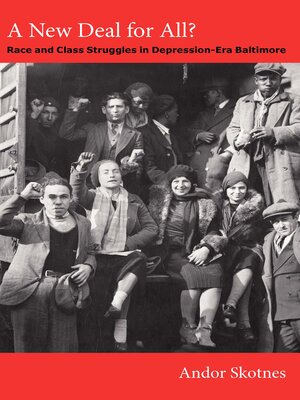A New Deal for All?
ebook ∣ Race and Class Struggles in Depression-Era Baltimore · Radical Perspectives
By Andor Skotnes

Sign up to save your library
With an OverDrive account, you can save your favorite libraries for at-a-glance information about availability. Find out more about OverDrive accounts.
Find this title in Libby, the library reading app by OverDrive.



Search for a digital library with this title
Title found at these libraries:
| Library Name | Distance |
|---|---|
| Loading... |
In A New Deal for All? Andor Skotnes examines the interrelationships between the Black freedom movement and the workers' movement in Baltimore and Maryland during the Great Depression and the early years of the Second World War. Adding to the growing body of scholarship on the long civil rights struggle, he argues that such "border state" movements helped resuscitate and transform the national freedom and labor struggles. In the wake of the Great Crash of 1929, the freedom and workers' movements had to rebuild themselves, often in new forms. In the early 1930s, deepening commitments to antiracism led Communists and Socialists in Baltimore to launch racially integrated initiatives for workers' rights, the unemployed, and social justice. An organization of radicalized African American youth, the City-Wide Young People's Forum, emerged in the Black community and became involved in mass educational, anti-lynching, and Buy Where You Can Work campaigns, often in multiracial alliances with other progressives. During the later 1930s, the movements of Baltimore merged into new and renewed national organizations, especially the CIO and the NAACP, and built mass regional struggles. While this collaboration declined after the war, Skotnes shows that the earlier cooperative efforts greatly shaped national freedom campaigns to come—including the civil rights movement.







